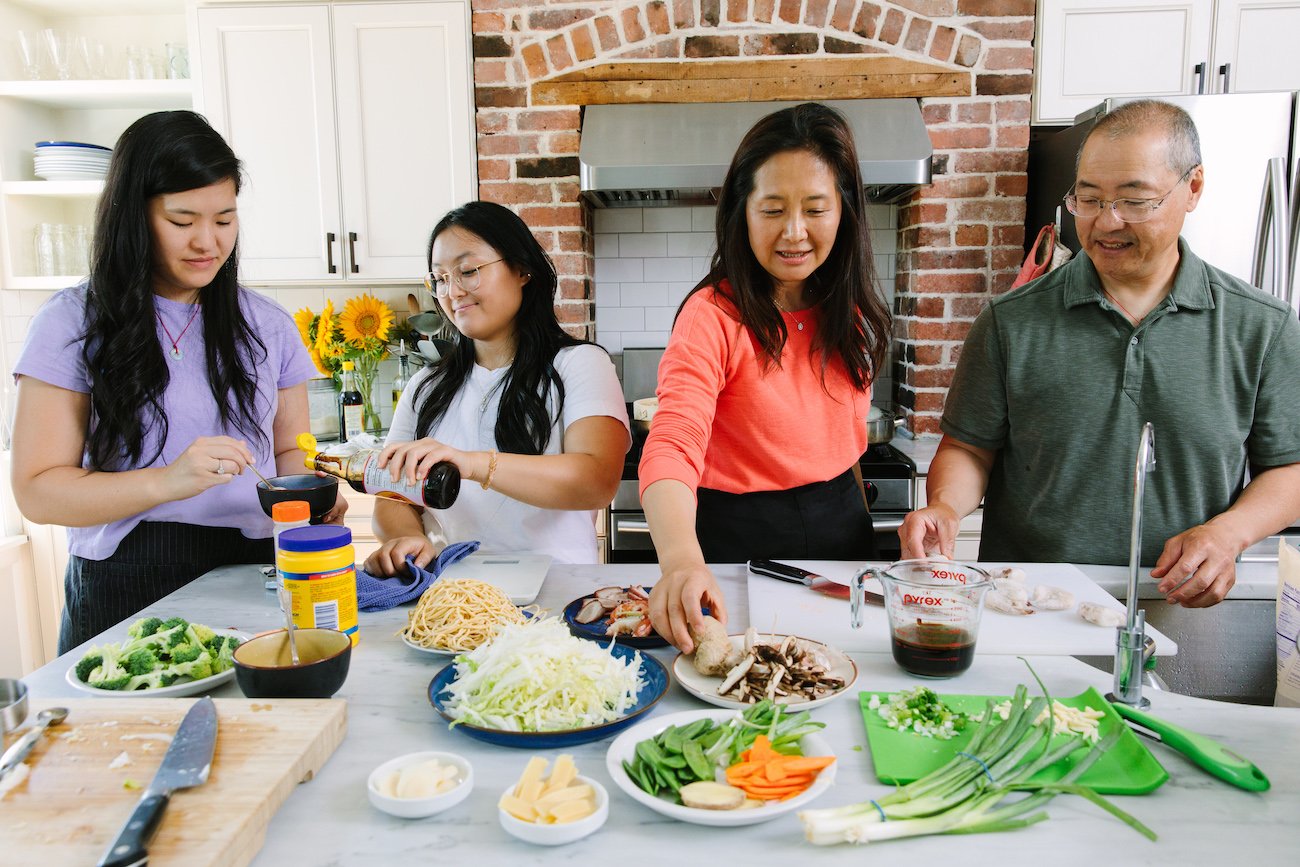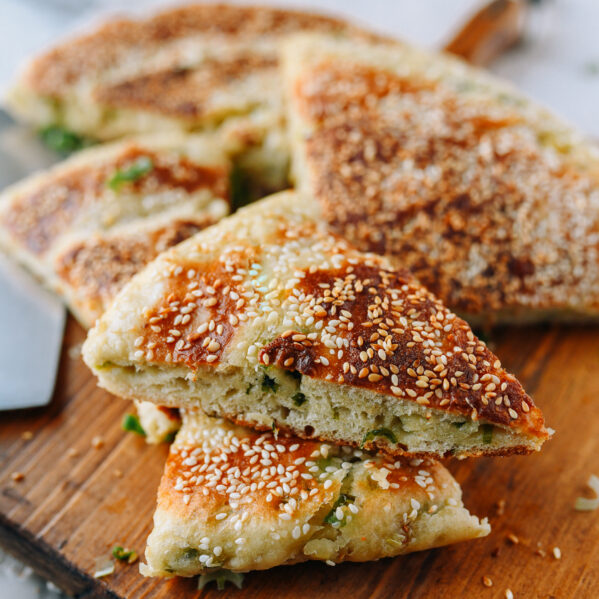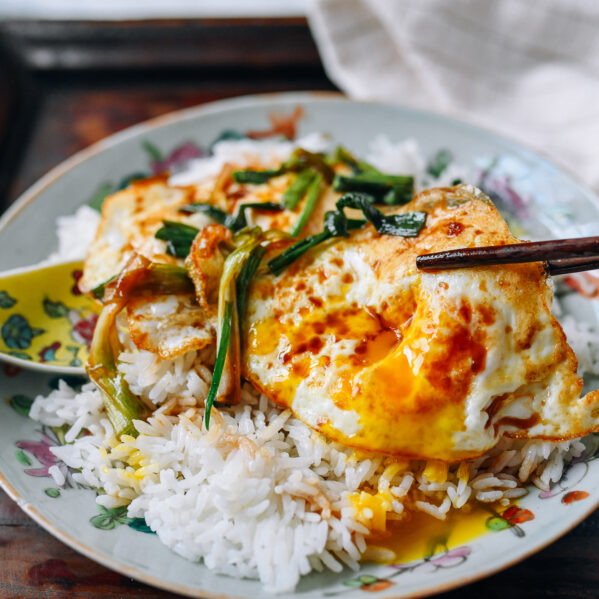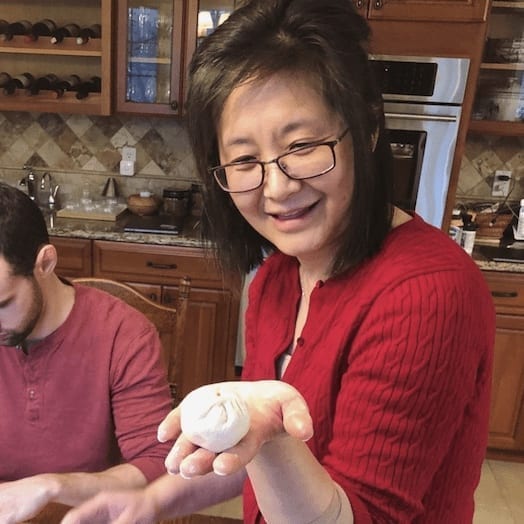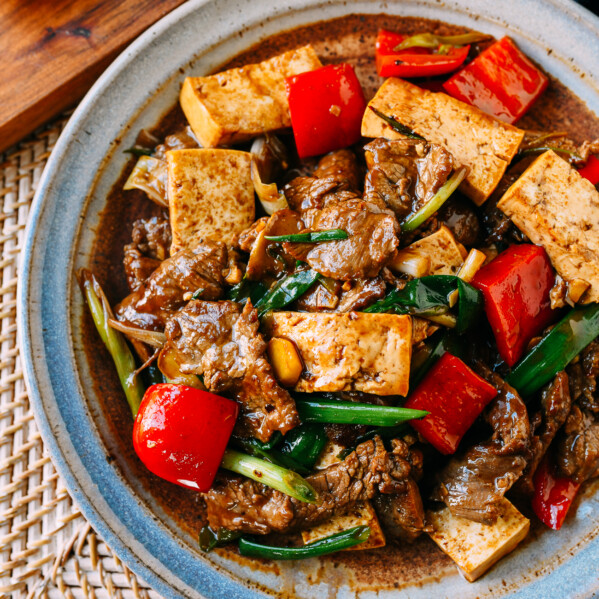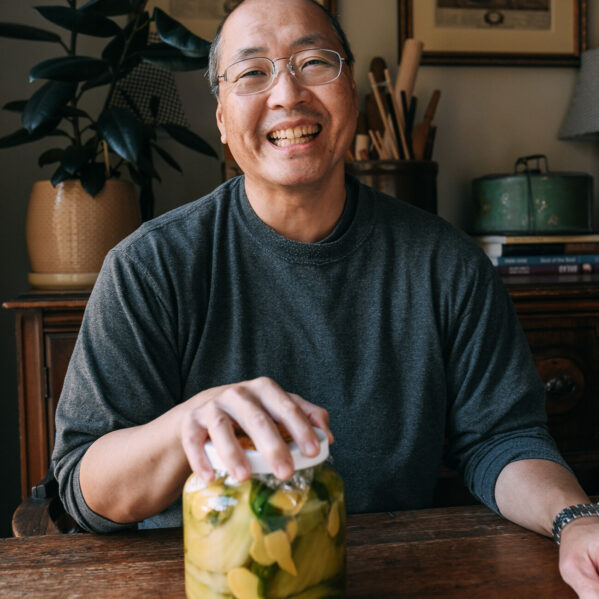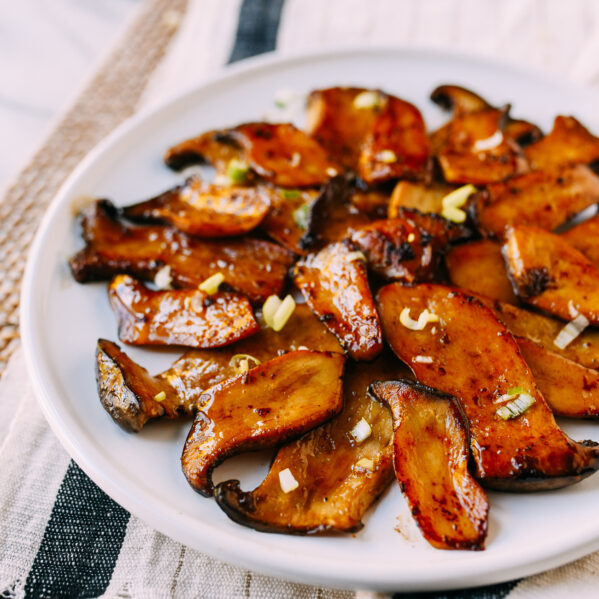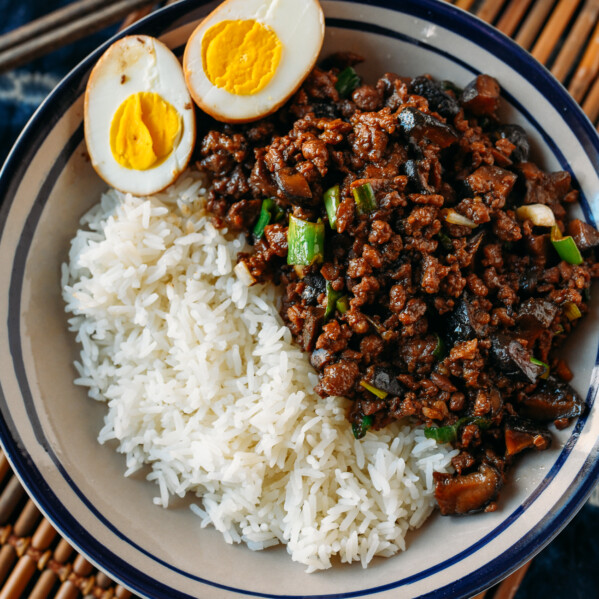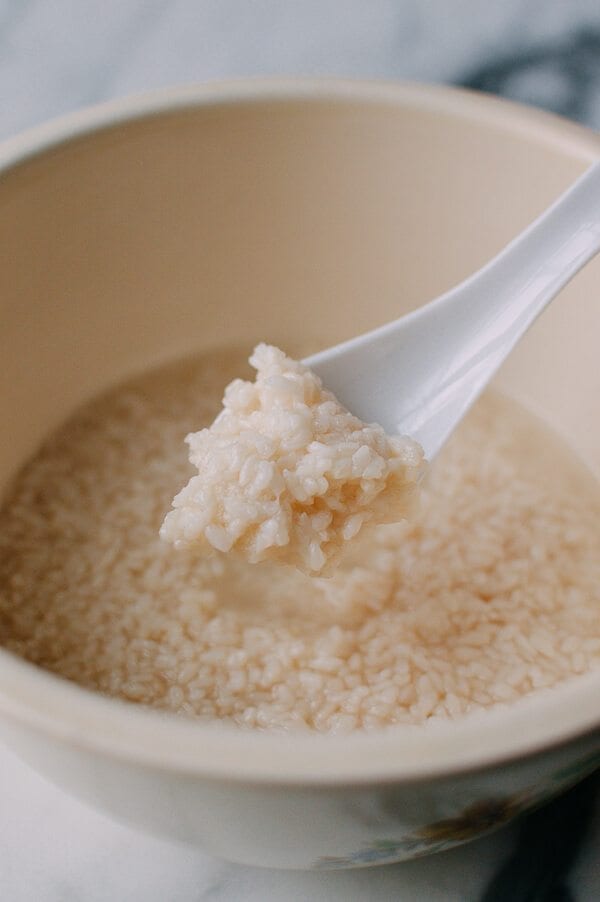
What Is Jiu Niang?
Jiu Niang (酒酿) is a fermented sweet rice, made with a distiller’s yeast starter called jiu qu 酒曲 and sticky rice. It has a low alcohol content of 1-2%. You may also hear it called Sweet Rice Wine (甜米酒, tian mi jiu) or even translated as “sweet rice sauce.” It also has numerous other Chinese names depending on what part of China you’re from: 醪糟 (lao zao), 甜酒 (tian jiu), 糯米酒 (nuo mi jiu), 江米酒 (jiang mi jiu), and 酒糟 (jiu zao).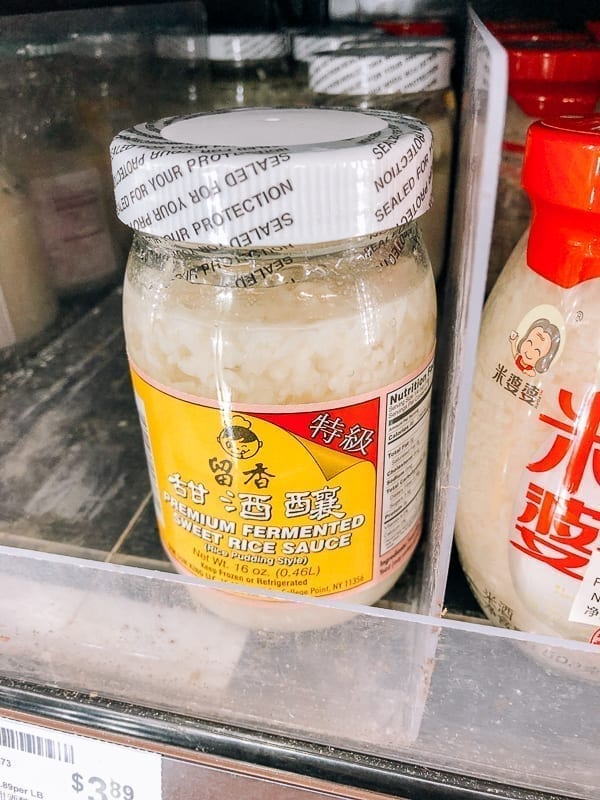
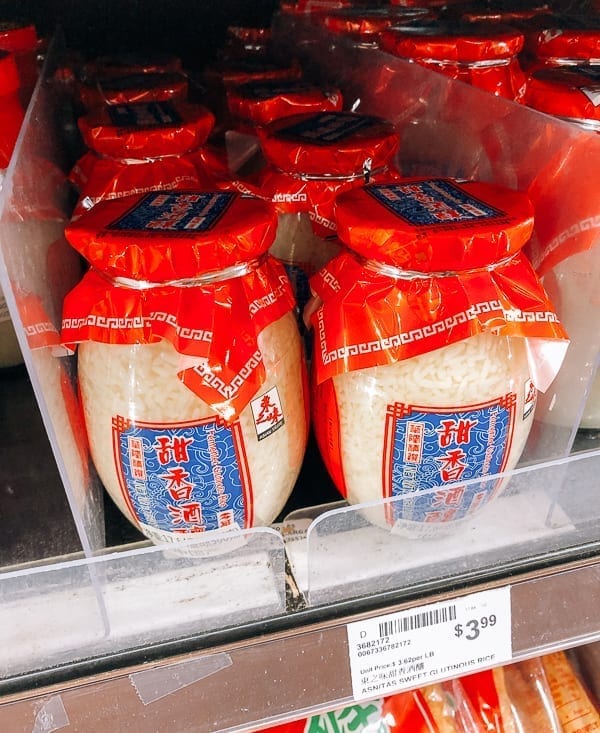 This ingredient is the result of early rice wine production––as a by-product. When fermentation stops early on in the production process, the partially fermented rice and sweet liquid can be served alone. It has the texture of rice pudding, and a sweet and faintly alcoholic flavor.
One stops the fermentation process by cooling the mixture down, which is why jiu niang is traditionally served during the wintertime.
To make jiu niang, you’re essentially beginning the process of making rice wine. If you were to allow the rice to continue to ferment, it would produce wine!
This ingredient is the result of early rice wine production––as a by-product. When fermentation stops early on in the production process, the partially fermented rice and sweet liquid can be served alone. It has the texture of rice pudding, and a sweet and faintly alcoholic flavor.
One stops the fermentation process by cooling the mixture down, which is why jiu niang is traditionally served during the wintertime.
To make jiu niang, you’re essentially beginning the process of making rice wine. If you were to allow the rice to continue to ferment, it would produce wine!
How to Use It
Jiu niang is often served warm, along with sweet tang yuan, or sticky rice dumplings. Like any type of fermented food or alcohol, it seems that you either like it or you don’t. Over the years, however, one seems to develop a taste for it!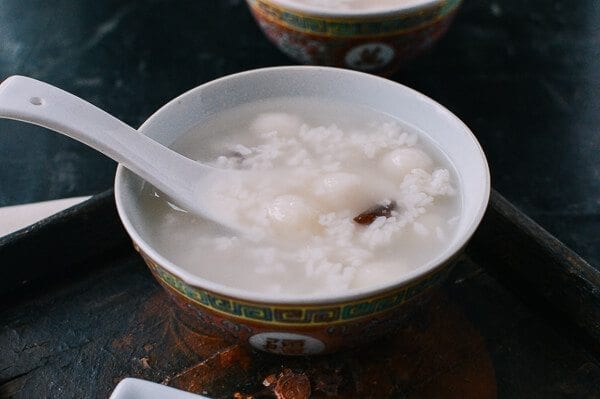 Serve it simply as a hot rice porridge, or just eat it plain by the spoonful.
You can also use it in place of rice wine in savory braised dishes like Red Cooked Pork or Chinese Braised Fish, or even to make bread (to replace part of the yeast and sugar, depending on the recipe, giving the dough a refreshing, sweet, and aromatic wine flavor).
Serve it simply as a hot rice porridge, or just eat it plain by the spoonful.
You can also use it in place of rice wine in savory braised dishes like Red Cooked Pork or Chinese Braised Fish, or even to make bread (to replace part of the yeast and sugar, depending on the recipe, giving the dough a refreshing, sweet, and aromatic wine flavor).
Buying & Storing
This ingredient is readily available in Asian markets. You can also make it from scratch with our recipe for Homemade Jiu Niang. Store it in the refrigerator to ensure that additional fermentation doesn’t happen. The homemade stuff will last 1-2 months in the refrigerator. If using store-bought, check the package for an expiration date.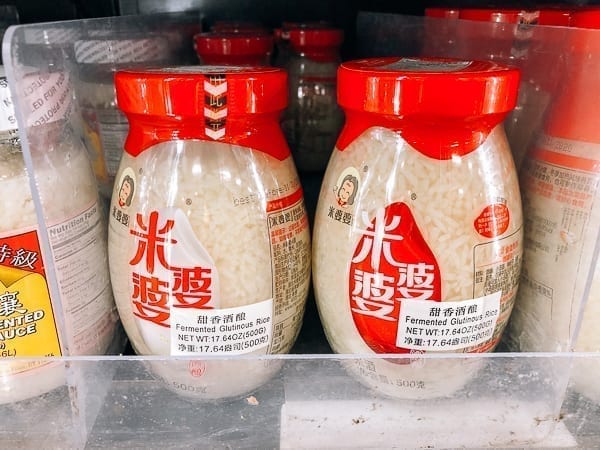
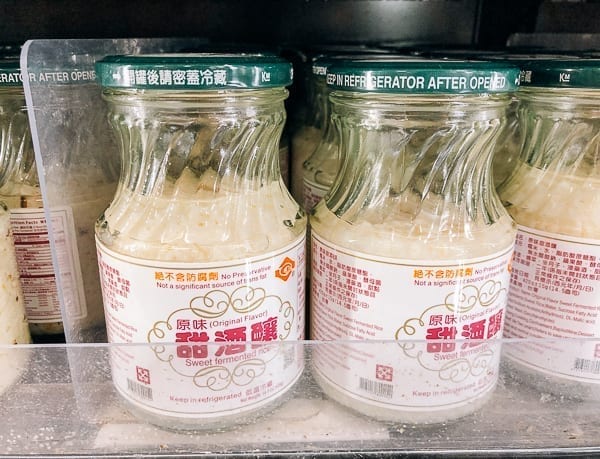 Always make sure to use a clean utensil when making and using it. Everything that comes in contact with the sweet rice must be uncontaminated, or mold will develop and you’ll have to discard the whole batch.
If you have further questions about Chinese jiu niang, let us know in the comments––we try to answer every single one.
Always make sure to use a clean utensil when making and using it. Everything that comes in contact with the sweet rice must be uncontaminated, or mold will develop and you’ll have to discard the whole batch.
If you have further questions about Chinese jiu niang, let us know in the comments––we try to answer every single one. 



